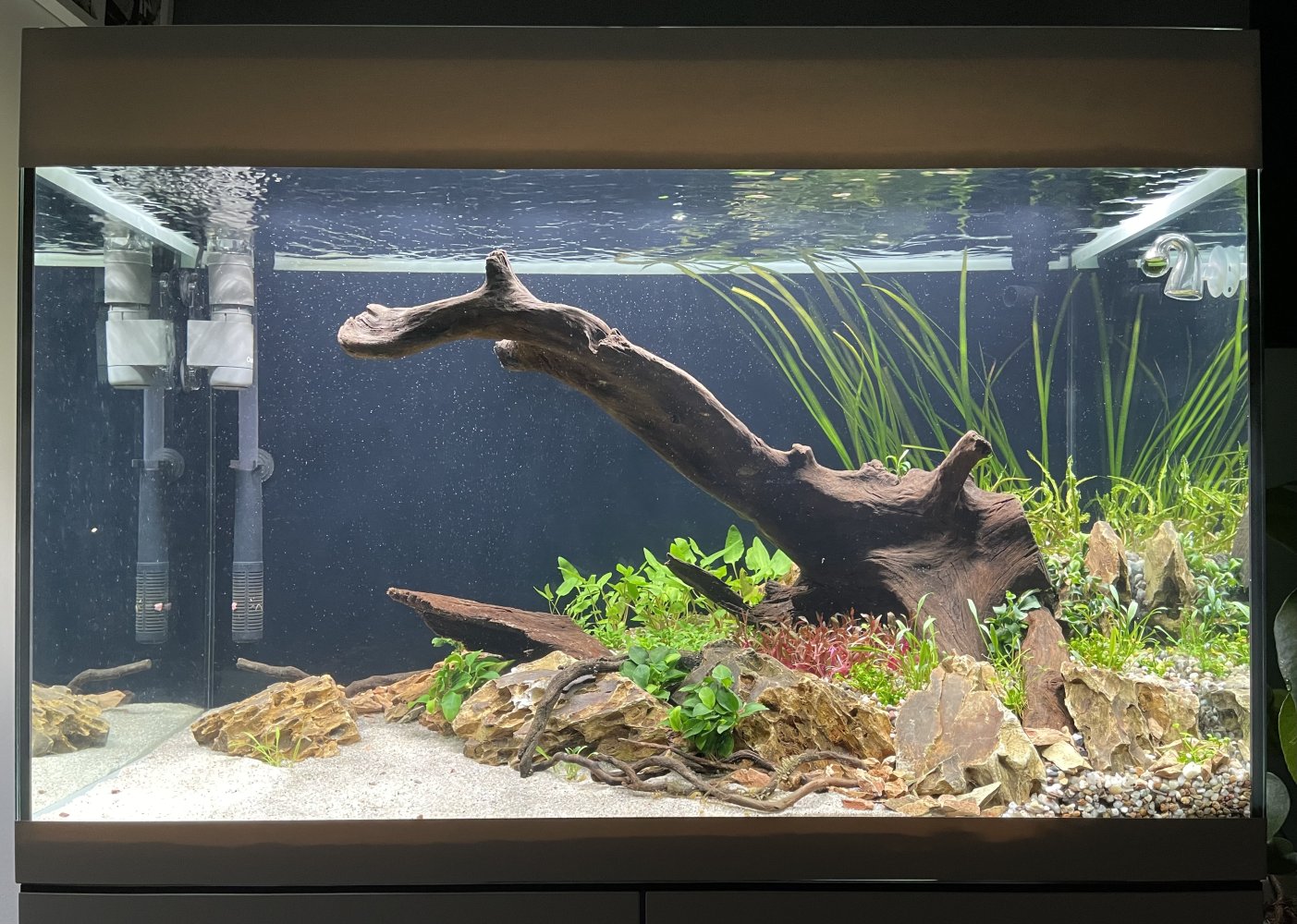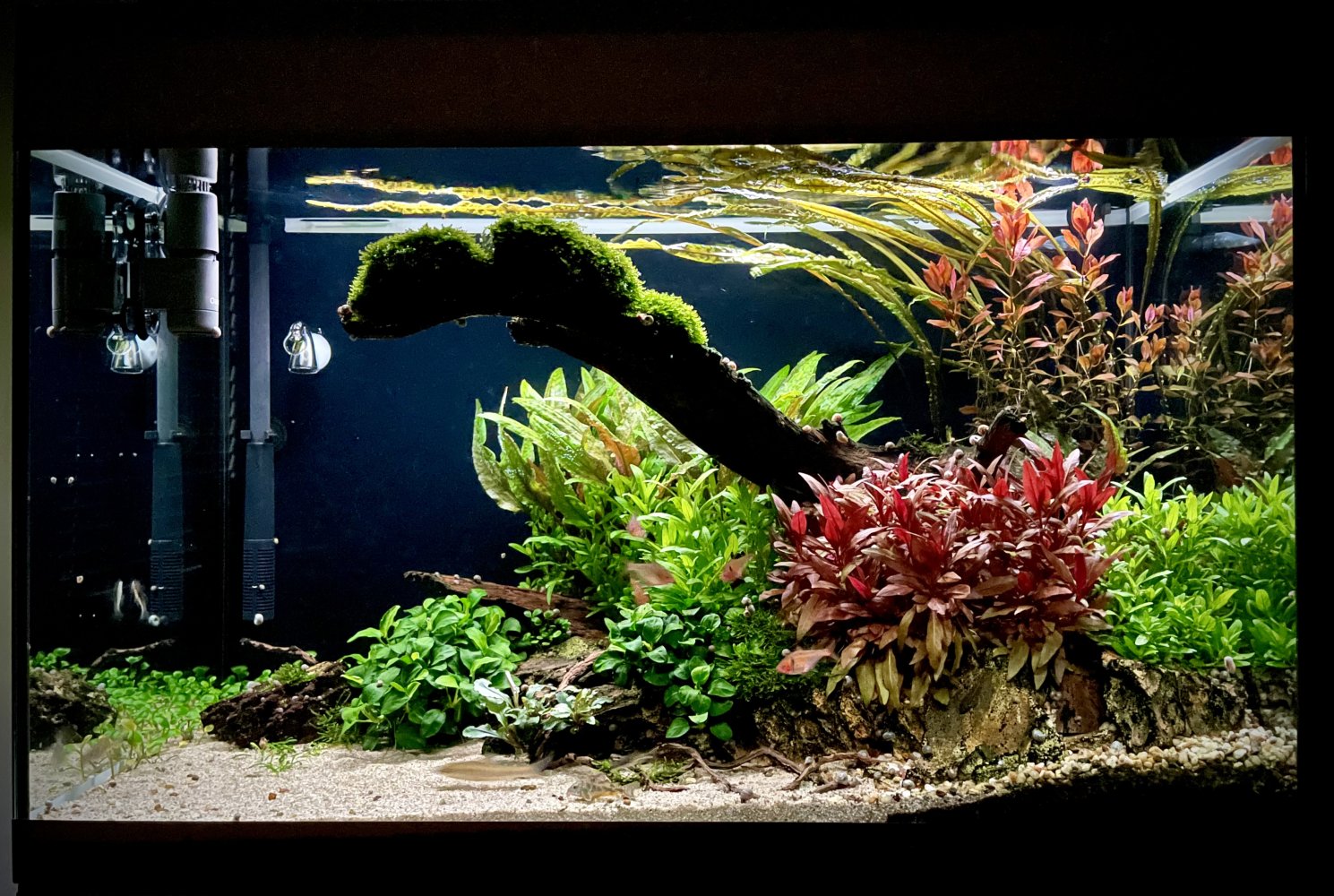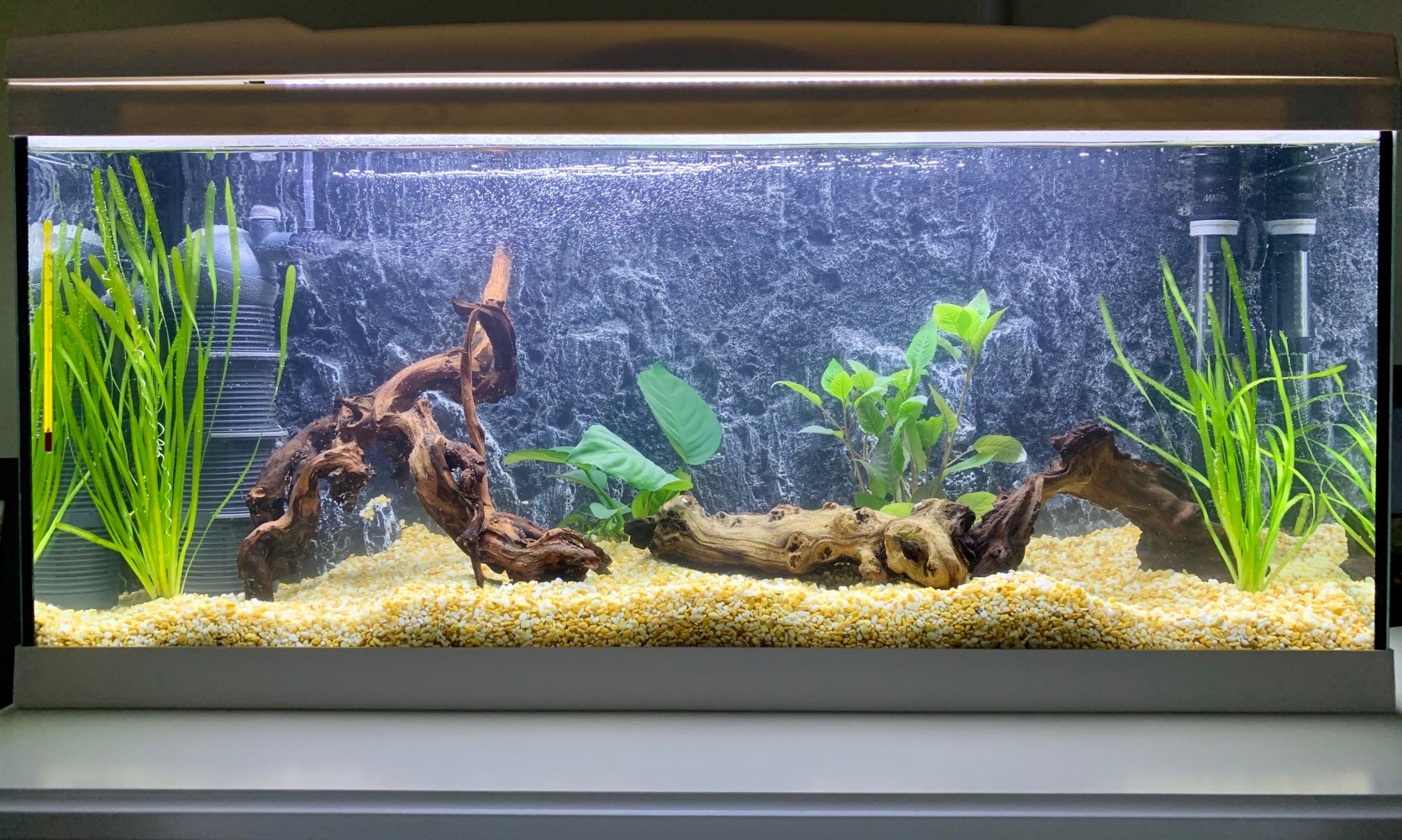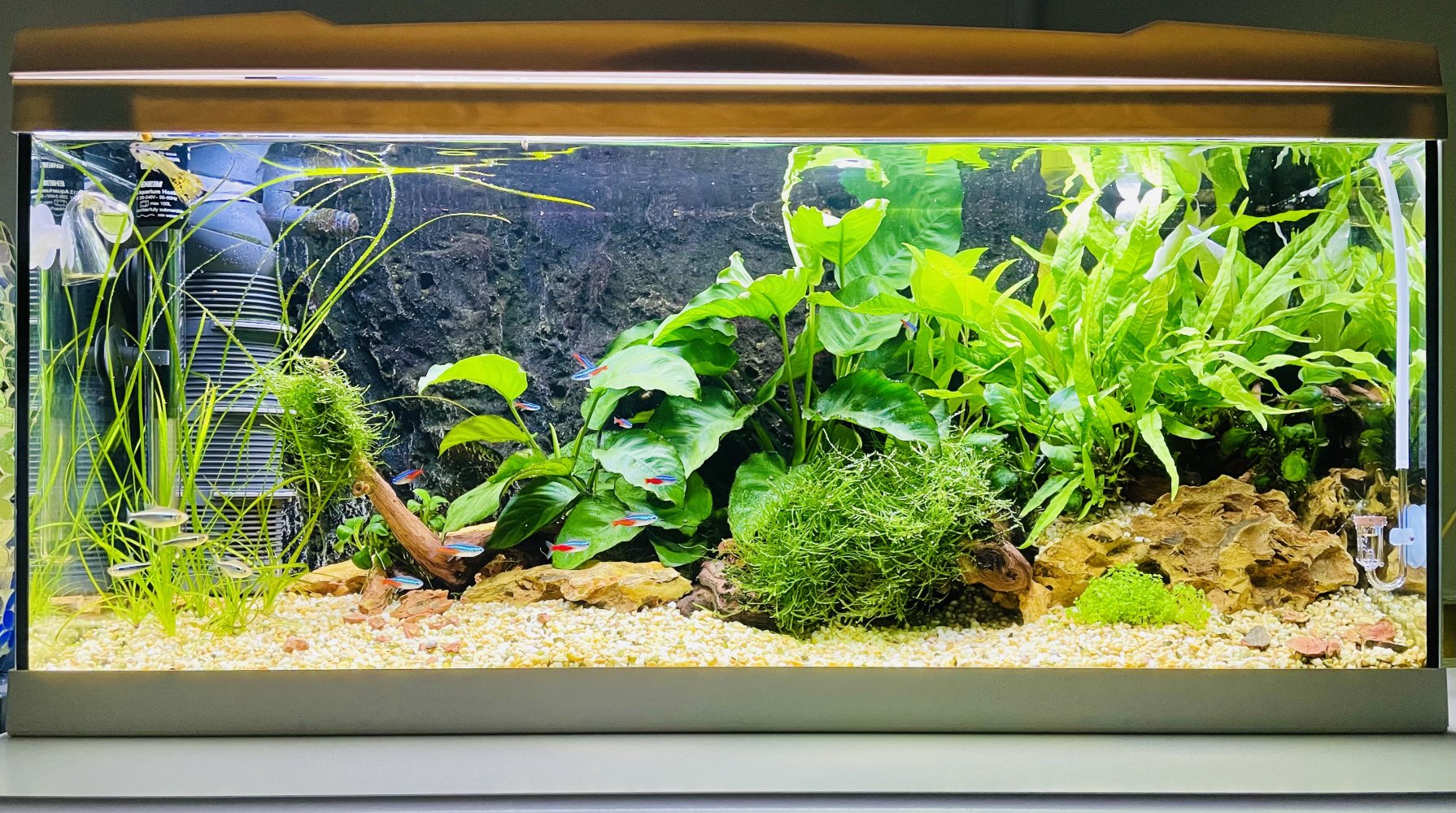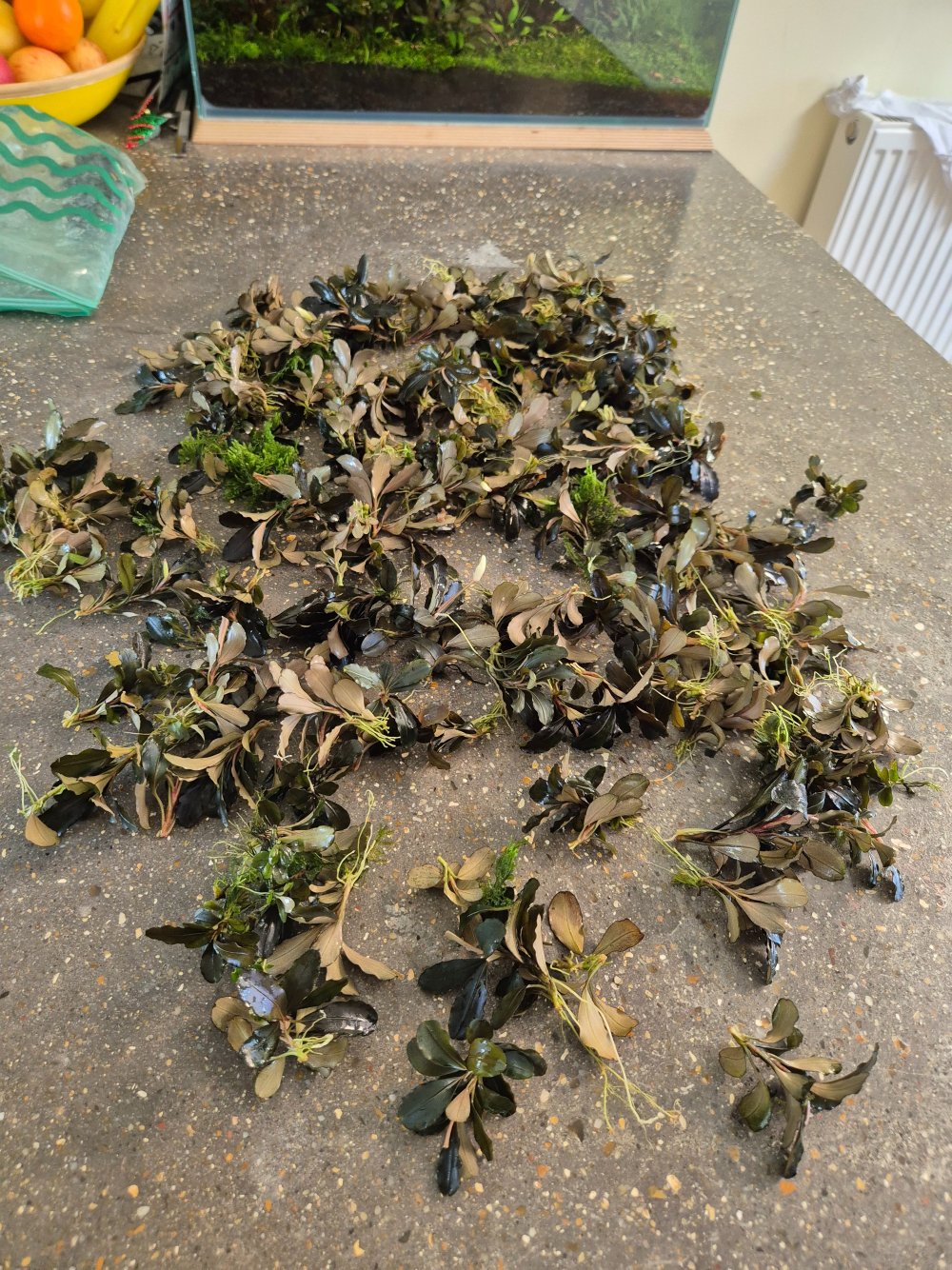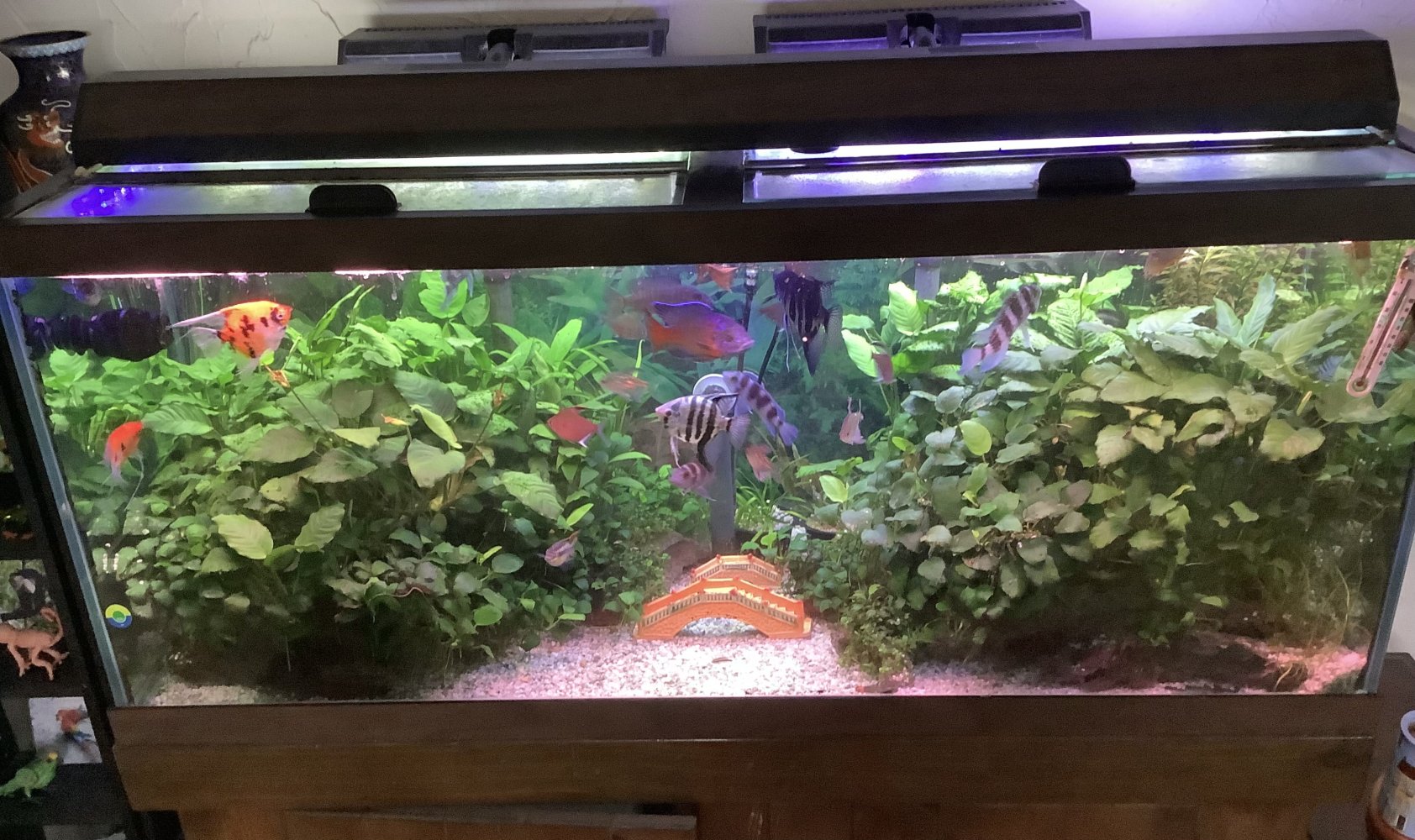Hi, I was wondering if anyone could give estimates on the spread rate of a plant you’ve attached to a rock, or wood etc
The reason why I asked this is because I have anubias that are years old, but while they have created plenty of new leaves and roots their rhizome is almost as it was when I bought it.
Which reminds me…
Ray had this scape in Scaped Nature:

How long does something like this take to grow? How much buce should I start with? 😅
The reason why I asked this is because I have anubias that are years old, but while they have created plenty of new leaves and roots their rhizome is almost as it was when I bought it.
Which reminds me…
Ray had this scape in Scaped Nature:

How long does something like this take to grow? How much buce should I start with? 😅


